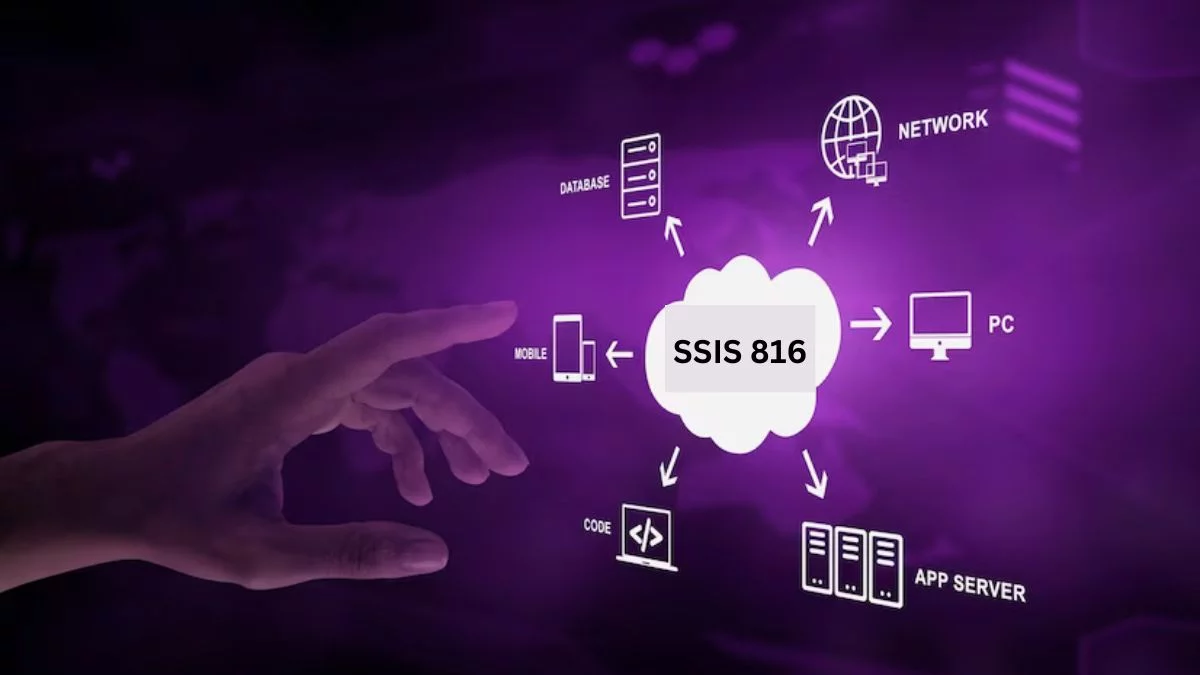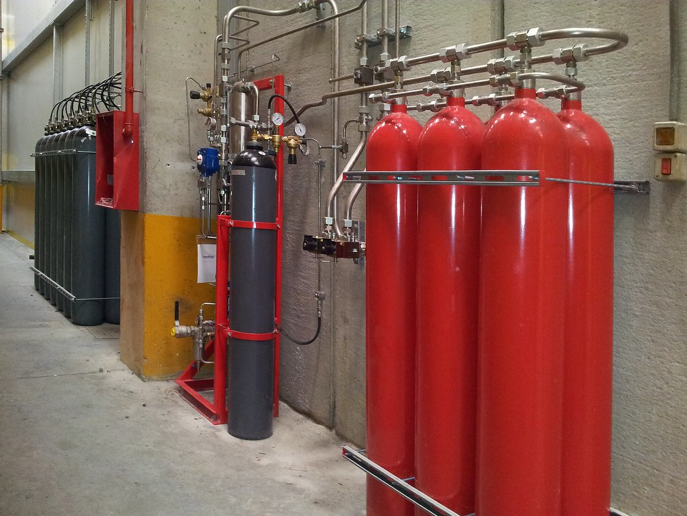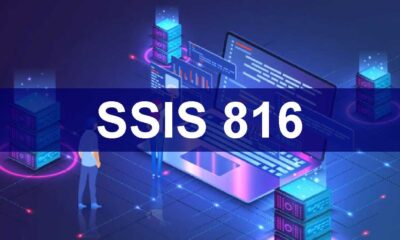Technology
Mastering SSIS 816: Guide for Data Integration

Understanding SSIS 816 is essential for anyone looking to excel in the field of data integration. But what exactly is SSIS 816? It stands for SQL Server Integration Services 2016, which is a powerful tool that allows you to extract, transform, and load data from various sources into your desired destination. With its user-friendly interface and extensive features, SSIS 816 provides a seamless experience for designing and configuring packages. Whether you’re a data analyst or a database administrator, mastering SSIS 816 will undoubtedly elevate your skills and make you an indispensable asset in the world of data integration.
SSIS 816 offers a wide range of benefits that can revolutionize how you handle your data. It enables efficient ETL processes by extracting relevant information from multiple sources, transforming it as required, and loading it seamlessly into your target destinations. Additionally, it facilitates effective data warehousing by enabling the creation of robust solutions for storing large volumes of structured or unstructured data. Furthermore, with its business intelligence capabilities, SSIS 816 empowers organizations to gather valuable insights and make informed decisions based on accurate and timely information. In short, understanding SSIS 816 opens up endless possibilities for streamlining workflows and ensuring optimal utilization of resources within any organization’s data ecosystem
What is SSIS 816?
SSIS 816, also known as SQL Server Integration Services, is a powerful data integration tool developed by Microsoft. It allows users to extract, transform, and load (ETL) data from various sources into relational databases or other destinations. With SSIS 816, you can easily create and manage complex workflows for data integration tasks.
This tool provides a user-friendly interface that makes it easier for developers to design and configure packages. The drag-and-drop functionality enables you to build robust data integration solutions without writing extensive code. SSIS 816 also offers advanced features like error handling, logging, and package deployment options. Whether you’re working on ETL processes, data warehousing projects, or business intelligence initiatives, SSIS 816 can streamline your data integration tasks and improve efficiency in your organization.
Key Features and Benefits of SSIS 816
SSIS 816 comes with a range of key features and benefits that make it an essential tool for data integration. With its intuitive user interface, users can easily navigate through the software and create efficient packages for their data workflows.
One of the standout features of SSIS 816 is its ability to handle complex ETL processes. Whether you need to extract data from multiple sources, transform it into a desired format, or load it into a target destination, SSIS 816 has got you covered. Additionally, this powerful tool enables seamless data warehousing, allowing businesses to store and analyze large volumes of information efficiently.
Moreover, SSIS 816 excels in business intelligence applications by providing robust capabilities for extracting insights from raw data. It offers various built-in tasks and transformations that enable users to manipulate and cleanse data before analysis. This ensures accurate reporting and informed decision-making within organizations.
Furthermore, this versatile tool facilitates smooth data migration between different systems or databases. Whether you’re upgrading your software or consolidating your databases, SSIS 816 simplifies the process by offering easy-to-use tools for mapping source and destination fields.
In addition to these core functionalities, SSIS 816 also supports replication scenarios where real-time synchronization is crucial. Users can set up replication tasks effortlessly using the available components in the package designer.
Another significant benefit of utilizing SSIS 816 is workflow automation. Through its scheduling options and event-driven triggers, users can automate their repetitive tasks effectively without manual intervention.
With all these remarkable features at hand, it’s clear why professionals turn to SSIS 816 when it comes to efficient and seamless data integration solutions.
Getting Started with SSIS 816
How to Download and Install SSIS 816
To begin your journey with SSIS 816, the first step is to download and install the software. Visit the official Microsoft website or trusted third-party sources to ensure you’re getting a legitimate version. Once downloaded, follow the installation wizard prompts to complete the process. It’s important to note that system requirements may vary, so make sure your computer meets the necessary specifications.
Familiarizing Yourself with the User Interface
Once installed, it’s time to familiarize yourself with the user interface of SSIS 816. Take some time exploring different menus and options available within the software. This will help you navigate through various features easily as you start working on your data integration projects. Don’t be overwhelmed by all its functionalities – take it one step at a time and soon enough, you’ll become comfortable navigating through SSIS 816 like a pro!
How to Download and Install SSIS 816
To get started with SSIS 816, the first step is to download and install the software. Fortunately, this process is straightforward and can be done in just a few simple steps.
First, visit the official Microsoft website and navigate to the SQL Server Integration Services page. From there, you can choose the version of SSIS that corresponds to your operating system. Once you’ve selected the appropriate version, click on the download button to begin downloading the installation package.
Once the download is complete, locate the installation file on your computer and double-click it to start the installation process. Follow the prompts provided by the installer, making sure to read each step carefully before proceeding. When prompted for any additional options or configurations during installation, make your selections according to your preferences.
Familiarizing Yourself with the User Interface
The user interface of SSIS 816 is designed to be intuitive and user-friendly. When you first open the application, you will be greeted with a clean and organized layout that allows for easy navigation. The main window is divided into different sections, such as the toolbox, control flow tab, data flow tab, and output window.
To become familiar with the user interface, take some time to explore each section and understand its purpose. The toolbox contains various components that can be dragged and dropped onto the design surface to create your data integration workflows. The control flow tab allows you to define the sequence of tasks in your package while the data flow tab enables you to configure how data moves between sources and destinations.
Getting acquainted with the SSIS 816 user interface is essential for the efficient development of your packages. Take advantage of its organized layout and explore each section’s functionalities to make full use of this powerful tool in your data integration projects.
Creating a New Project
Creating a new project in SSIS 816 is a crucial step in data integration. To begin, simply open the SSIS 816 application and navigate to the “File” menu. From there, select “New Project” to initiate the project creation process.
In the project creation window, you will be prompted to provide a name and location for your new project. It’s important to choose a descriptive name that accurately reflects the purpose of your project. Additionally, selecting an appropriate location ensures easy access to your files.
Once you’ve provided all the necessary information, click on “OK” to create your new project. Congratulations! You’re now ready to start building packages and designing solutions for seamless data integration in SSIS 816. Stay tuned for more tips and tricks as we dive deeper into mastering this powerful tool!
Creating a Package
Creating a Package in SSIS 816 is an essential step in data integration. Once you have created your project, it’s time to design and configure your package. This involves selecting the necessary components from the toolbox, such as data sources, transformations, and destinations.
To create a package, simply drag and drop these components onto the control flow canvas. You can then connect them with arrows to define the sequence of tasks. Next, you’ll need to configure each component by specifying properties like connection strings and mappings. SSIS 816 provides a user-friendly interface for easily managing these configurations.
By creating packages in SSIS 816, you gain complete control over how your data is processed and transformed during integration. Whether you’re extracting data from multiple sources or loading it into various destinations, creating a well-designed package ensures the smooth execution of your ETL processes. So don’t hesitate to dive into SSIS 816 and start building powerful packages today!
Designing and Configuring Your First Package
Designing and configuring your first package in SSIS 816 is an exciting step toward mastering data integration. Once you have created a new project, it’s time to dive into the user interface and start building your package. With drag-and-drop functionality, you can easily add tasks and components to your package, such as extracting data from a source, transforming it using various transformations, and loading it into a destination. You can also customize the settings for each task or component to meet your specific requirements.
To configure your package, simply select the task or component you want to modify and use the properties window to make changes. This includes specifying connection managers for data sources and destinations, defining transformation logic using expressions or scripts, setting error-handling options, and much more. The intuitive interface of SSIS 816 makes it easy for both beginners and experienced users to design complex packages with ease.
Remember that designing and configuring packages may require some trial and error as you test different configurations and fine-tune settings based on your unique scenario. Don’t be afraid to explore the various tools available in SSIS 816 to create robust packages that efficiently handle your data integration needs!
Common Uses and Applications of SSIS 816
ETL (Extract, Transform, Load): One of the primary uses of SSIS 816 is for ETL processes. It allows you to extract data from various sources, transform it according to your business rules or requirements, and load it into a target database or data warehouse.
Data Warehousing: Another common application of SSIS 816 is in building and maintaining data warehouses. With its powerful capabilities for extracting and transforming large volumes of data, you can easily create a centralized repository that enables efficient reporting and analysis.
Business Intelligence: SSIS 816 plays a crucial role in business intelligence initiatives by providing the means to integrate and consolidate disparate data sources. This enables organizations to gain valuable insights through accurate reporting, dashboards, and analytics tools.
Data Migration: When migrating data from one system or platform to another, SSIS 816 comes in handy. Its intuitive interface allows you to map source tables/columns to destination tables/columns effortlessly while ensuring the integrity of the migrated data.
Replication: For organizations with distributed databases that require synchronization between multiple servers or locations, SSIS 816 offers robust replication features. You can easily configure replication tasks using its graphical interface without writing complex code.
Workflow Automation: SSIS 816 enables workflow automation by allowing you to schedule packages at predefined intervals or trigger them based on specific events. This helps streamline repetitive tasks and ensures the timely execution of critical processes within your organization.
ETL (Extract, Transform, Load)
ETL (Extract, Transform, Load) is a crucial process in data integration that plays a vital role in managing and combining large volumes of data from different sources.
The first step, extraction, involves retrieving the relevant data from various databases or applications. Once extracted, the next phase is transformation where the data undergoes cleansing and restructuring to ensure its accuracy and consistency. During the loading stage, the transformed data is loaded into a target database or system for further analysis and reporting.
ETL enables organizations to consolidate their disparate data sources into a unified view for better decision-making. It helps improve data quality by standardizing formats and removing duplicates or errors. With ETL processes powered by SSIS 816, businesses can efficiently integrate and synchronize their valuable information across multiple platforms without manual intervention!
Data Warehousing
Data Warehousing is one of the key applications of SSIS 816. It allows organizations to store and manage large volumes of data in a structured and organized manner. By creating a centralized repository, companies can easily access and analyze their data for reporting and decision-making purposes.
With SSIS 816, you can design robust ETL processes to extract data from various sources, transform it into a consistent format, and load it into the data warehouse. This ensures that the information is accurate, up-to-date, and readily available for analysis. Data warehousing with SSIS 816 provides businesses with valuable insights into their operations, customers, and markets, enabling them to make informed decisions and drive growth.
Business Intelligence
Business Intelligence (BI) is a crucial aspect of any business operation. It involves gathering, analyzing, and transforming data into meaningful insights that can drive strategic decision-making. With SSIS 816, you can easily integrate BI processes into your data flow.
Using the powerful tools and features of SSIS 816, you can extract data from various sources, transform it using advanced algorithms and calculations, and load it into a data warehouse or reporting system. This allows businesses to gain valuable insights from their data and make informed decisions to improve efficiency, identify trends, and optimize performance. With SSIS 816’s intuitive interface and comprehensive capabilities for Business Intelligence tasks, harnessing the power of your data has never been easier!
Data Migration
Data migration is a crucial aspect of any organization’s data management strategy. Whether it’s moving data from one system to another or consolidating data from multiple sources, SSIS 816 provides a powerful and efficient solution. With its intuitive interface and robust features, you can easily map and transform your data to ensure a seamless migration process.
By leveraging the capabilities of SSIS 816, you can automate the extraction, transformation, and loading of your data across different platforms and environments. This not only saves time but also minimizes the risk of errors during the migration process. From validating source data to handling complex mapping scenarios, SSIS 816 equips you with the tools needed to successfully migrate your data while maintaining its integrity and consistency.
Replication
Replication is a crucial aspect of data management that plays a significant role in SSIS 816. It allows you to distribute and synchronize data across multiple servers, ensuring consistency and availability. With replication, you can replicate entire databases or selected tables, making it ideal for scenarios where you need real-time updates across multiple locations.
By using replication in SSIS 816, you can easily create copies of your data at different sites without the need for manual intervention. This ensures that all your teams have access to the most up-to-date information, improving collaboration and decision-making processes. Additionally, replication enables failover support, allowing you to switch to another server seamlessly in case of any issues with the primary one.
Workflow Automation
Workflow Automation is a key application of SSIS 816 that can streamline and optimize your business processes. By automating repetitive tasks and workflows, you can save time and increase efficiency. With SSIS 816, you can design complex workflows with ease, incorporating various data sources, transformations, and actions to create a seamless automated process.
With the ability to schedule package execution and set up event-driven triggers, you can ensure that your workflows run on time and respond to specific conditions or events. This enables you to automate routine tasks such as data extraction, transformation, loading into databases or data warehouses, generating reports, and sending notifications or alerts based on predefined rules or criteria. Overall Workflow Automation helps in reducing manual effort while improving accuracy and consistency in handling business processes.
Troubleshooting Tips for SSIS 816
Review Error Messages: When encountering an error in SSIS 816, take the time to carefully read and understand the error message. This can provide valuable insight into what went wrong and how to fix it.
Check Connections: Ensure that all connections are properly configured and functioning correctly. Double-check connection strings, credentials, and permissions to avoid any issues with data transfer or connectivity.
Verify Source Data: Before running a package in SSIS 816, verify that the source data is accurate and formatted correctly. Incorrect or incomplete data can lead to errors during extraction or transformation processes.
Use Debugging Tools: Utilize the debugging tools available in SSIS 816 to step through your package’s execution and identify any issues along the way. Breakpoints, variable watchers, and logging options can help pinpoint where problems may arise.
By following these troubleshooting tips for SSIS 816, you’ll be equipped with strategies to overcome common challenges that may arise during your data integration projects. Remember, understanding error messages, checking connections and source data integrity, as well as utilizing debugging tools will help streamline your workflow when using SSIS 816
Review Error Messages
When working with SSIS 816, encountering errors is inevitable. However, understanding and resolving these errors is crucial for successful data integration. One of the key steps in troubleshooting is to review the error messages generated by SSIS.
Error messages provide valuable insights into what went wrong during the execution of a package or task. They often contain specific details about the nature of the error, such as missing or invalid data, connection issues, or syntax errors. By carefully examining these messages, you can quickly identify and address the root cause of any failures. Don’t overlook this important step in your journey towards mastering SSIS 816!
Check Connections
Checking Connections is an essential step in ensuring the smooth functioning of your SSIS 816 projects. When dealing with data integration, it’s crucial to verify that all connections between source and destination systems are properly established and working correctly.
By thoroughly checking connections, you can identify any potential issues or errors early on in the process. This allows you to address them promptly, preventing any disruptions or delays in your data integration workflow. Whether it’s a database connection or a network connection, taking the time to check and validate each one will help ensure the seamless execution of your SSIS 816 packages. So don’t overlook this crucial step – double-check those connections before moving forward!
Verify Source Data
To ensure the accuracy and reliability of your data integration process, it is crucial to verify the source data before proceeding. This step involves carefully examining the data to confirm its integrity and consistency. By verifying the source data, you can identify any errors or inconsistencies that may impact the effectiveness of your SSIS 816 package.
One way to verify your source data is by comparing it against a trusted reference dataset. This can help you identify any discrepancies or missing information that needs to be addressed. Additionally, you can run validation checks on the source data using SQL queries or other tools to ensure that it meets the required criteria for successful integration. Taking these steps will help minimize potential issues and improve overall data quality in your SSIS 816 project.
Use Debugging Tools
When working with SSIS, it’s important to have a solid understanding of debugging tools. These tools allow you to identify and fix any issues or errors in your packages, ensuring smooth data integration. The debugging process involves tracing the flow of data within your package, monitoring variables and expressions, and analyzing error messages.
One useful tool for debugging in is the Data Flow Path Editor. This tool allows you to examine the data flow paths used in your package and view properties such as source columns and transformations applied. By using this tool, you can pinpoint any bottlenecks or inconsistencies in your data flow, making it easier to troubleshoot and optimize your package.
In addition to the Data Flow Path Editor, also provides the Script Task Debugging feature. This allows you to execute custom scripts within your package during runtime and monitor their behavior. By stepping through each line of code, you can identify any logic errors or unexpected results that may be causing issues.
By leveraging these debugging tools effectively, you can ensure that your SSIS packages are running smoothly without any hiccups or errors along the way
Conclusion
SSIS 816 is a powerful tool for data integration, offering a wide range of features and benefits. From its intuitive user interface to its ability to handle complex ETL processes, SSIS provides users with the tools they need to efficiently manage their data workflows.
In addition, SSIS 816 has various applications in fields such as data warehousing, business intelligence, and workflow automation. With troubleshooting tips available for resolving any issues that may arise during usage, this comprehensive guide ensures that you have all the information you need to become a master of SSIS.
Technology
Effective Fire Suppression System Design: Balancing Safety and Efficiency

Table of Contents
- The Vital Role of Fire Suppression Systems
- Critical Components of Fire Suppression Systems
- Principles of Effective System Design
- Routine Maintenance and Inspections
- Benefits of Professional Installation
- Compliance with Safety Standards
- Emerging Technologies in Fire Suppression
The Vital Role of Fire Suppression Systems
Fire suppression systems play a critical role in safeguarding lives and protecting property. These systems detect and extinguish fires at their earliest stages, mitigating extensive damage and potential loss. Having a well-engineered fire suppression system design New York City, NY, can ensure maximum safety and efficiency in various applications, whether residential, commercial, or industrial. An effective fire suppression system encompasses several components that unite to combat fires. The sophistication and reliability of these systems can make a significant difference in emergencies. Ensuring your fire suppression systems are adequately designed and maintained can save lives and reduce financial losses. The importance of these systems cannot be no overstated, as they provide a first line of defense against potentially catastrophic events.
Critical Components of Fire Suppression Systems
Fire suppression systems include detection devices, alarm systems, control panels, and extinguishing agents. Detection devices, like smoke and heat sensors, identify fires early and alert the control panel. Alarm systems notify occupants of a fire, allowing them to evacuate safely. Control panels coordinate the response, receiving signals from detection devices. Extinguishing agents, including water, foam, chemical retardants, and gaseous suppressants, are deployed to extinguish the fire efficiently.
Principles of Effective System Design
A successful fire suppression system requires a thorough understanding of the environment and potential hazards, as well as customization to address unique risks. Fundamental principles include redundancy, proper detector placement, and selecting suitable extinguishing agents. Redundancy ensures the system remains operational even if one component fails, while proper detector placement ensures quick and accurate detection. Extinguishing agents should be chosen based on fire hazards’ nature and potential impact on people and property, ensuring comprehensive coverage and effective suppression.
Routine Maintenance and Inspections
Regular maintenance and inspections are crucial for maintaining fire suppression systems. Scheduled checks identify and rectify issues promptly, ensuring the system is ready for emergencies. Adhering to a strict maintenance schedule enhances the reliability of these systems, as per NFPA standards. Routine inspections test system components, including alarms, detectors, and control panels, to ensure proper functioning. Maintenance tasks may include battery replacement, cleaning, and secure connections. Annual inspections and full-system tests, such as simulating a fire scenario, ensure seamless system functionality and prevent potential issues from escalating.
Benefits of Professional Installation
Professional installation of fire suppression systems is essential for ensuring safety standards and proper integration. Certified technicians can assess building requirements, guide upgrades, and ensure compliance with codes and regulations. Professional installation reduces the risk of errors that could compromise system effectiveness during emergencies. While DIY installation may save costs, it is a wise choice due to potential risks. Incorrectly installed systems may not function properly, leading to severe consequences. Trusting experts provides peace of mind and optimal system performance.
Compliance with Safety Standards
Adhering to safety standards is essential when designing and installing fire suppression systems. National and local regulations dictate the specifications and periodic testing requirements to ensure the effectiveness and reliability of these systems. The OSHA Guidelines provide comprehensive requirements for fire suppression systems in workplaces. Compliance with safety standards is crucial for building occupants and ensuring the fire suppression system performs as expected during emergencies. Non-compliance can lead to legal liabilities and an increased risk of damage or injury. Staying updated with safety regulations and guidelines is essential as fire suppression technologies evolve. Regular consultation with professionals ensures compliance and up-to-date systems.
Emerging Technologies in Fire Suppression
Technological advancements are transforming fire suppression systems and improving safety and efficiency through intelligent detectors, automated monitoring, and eco-friendly extinguishing agents. These technologies can transform fire management and control in various settings. Intelligent sensors can distinguish different fire signals, minimizing incorrect alerts. Automated surveillance systems provide live information and remote control. Environmentally friendly extinguishing agents like water mist and clean agents offer efficient suppression without harming the environment. These advancements highlight the importance of staying updated on fire safety and incorporating these technologies into current systems. Automated systems can send alerts to emergency services, reducing response times. Keeping up-to-date with fire suppression technology is crucial for ensuring the highest level of protection.
Technology
Creativity with ilikecpmix: Revolutionizing Content Creation

In the fast-paced world of digital content, the demand for efficient and innovative tools is ever-growing. Enter “ilikecpmix” – a powerful content creation tool that has been making waves in the digital landscape. This article delves into the intricacies of “ilikecpmix,” exploring its components, benefits, real-world applications, and its impact on SEO strategies.
Understanding the Components of ilikecpmix
“ilikecpmix” is not just another content creation tool; it’s a comprehensive solution designed to enhance the way we create and optimize content. Its intuitive interface and powerful algorithms make it a must-have for marketers, writers, and anyone looking to boost their online presence.
Benefits of ilikecpmix
Enhanced Content Creation
One of the standout features of “like cpmix” is its ability to generate high-quality content with minimal input. Whether you’re a seasoned content creator or a novice, this tool streamlines the writing process, saving you time and effort.
Improved SEO Strategies
In the ever-changing landscape of search engine algorithms, staying ahead is crucial. “like cpmix” not only helps in creating engaging content but also ensures that it is optimized for search engines, giving your website a competitive edge.
How to Use ilikecpmix
Step-by-Step Guide for Beginners
Getting started with “like cpmix” is a breeze. This section provides a beginner-friendly guide, ensuring that users of all levels can harness the power of this tool effectively.
Advanced Tips for Experienced Users
For those well-acquainted with “like cpmix,” we explore advanced tips and tricks to take your content creation to the next level. Unleash the full potential of the tool with these expert insights.
Real-World Examples
Success Stories Using ilikecpmix
Discover how businesses and individuals have achieved success using “like cpmix.” From boosting online presence to increasing conversion rates, these real-world examples highlight the tangible benefits of incorporating this tool into your strategy.
Industries that Can Benefit from ilikecpmix
Whether you’re in e-commerce, blogging, or digital marketing, “like cpmix” caters to a diverse range of industries. Explore how different sectors can leverage this tool for optimal results.
SEO Integration
ilikecpmix and its Impact on Search Engine Rankings
A deep dive into the correlation between “like cpmix” and SEO. Learn how using this tool can positively influence your website’s search engine rankings and drive organic traffic.
Best Practices for SEO Optimization with ilikecpmix
Unlock the secrets to maximizing SEO benefits with “like cpmix.” This section provides practical tips for optimizing your content and improving your website’s visibility on search engines.
Overcoming Challenges
Common Issues Users Face with ilikecpmix
While “like cpmix” is a game-changer, users may encounter challenges. This section addresses common issues and provides solutions and troubleshooting tips for a seamless experience.
Updates and Improvements
Latest Features and Updates in ilikecpmix
Stay informed about the latest features and updates rolled out by the “ilikecpmix” team. Learn how user feedback contributes to continuous improvements, ensuring a dynamic and evolving tool.
How User Feedback Contributes to Improvements
Discover the user-centric approach of “like cpmix” and how feedback from the community shapes its development. Your voice matters in making this tool even more effective.
Future Trends
Predictions for the Future of ilikecpmix
What does the future hold for “like cpmix”? Explore predictions and potential advancements in content creation technology. Stay ahead of the curve with insights into upcoming trends.
Emerging Technologies in Content Creation
As technology evolves, so does content creation. This section explores emerging technologies that might shape the landscape of content creation, with “ilikecpmix” leading the way.
User Testimonials
Positive Experiences Shared by Users
Read firsthand experiences of users who have transformed their content creation process with “like cpmix.” From bloggers to business owners, discover how this tool has made a difference.
Testimonials Highlighting the Effectiveness of ilikecpmix
Explore testimonials that specifically highlight the effectiveness of “like cpmix” in achieving specific goals. These stories provide valuable insights into the practical benefits of using this tool.
Comparison with Alternatives
Contrasting ilikecpmix with Other Content Creation Tools
While there are various content creation tools in the market, “like cpmix” stands out. This section compares it with alternatives, showcasing the unique advantages that set “ilikecpmix” apart.
Unique Advantages of ilikecpmix
Discover what makes “like cpmix” the preferred choice. From its user-friendly interface to advanced algorithms, understand the unique advantages that make it a game-changer in content creation.
Tips and Tricks
Pro Tips for Maximizing the Potential of ilikecpmix
Unlock the full potential of “like cpmix” with expert tips from seasoned users. Whether you’re a beginner or an advanced user, these tips will elevate your content creation game.
Creative Ways to Use the Tool for Different Purposes
Beyond the basics, explore creative ways to use “like cpmix” for various purposes. From social media content to email newsletters, discover the versatility of this tool.
Community and Support
Engaging with the ilikecpmix Community
Join a vibrant community of “like comix” users. This section highlights the importance of community engagement, sharing ideas, and collaborating for mutual success.
Available Support Channels for Users
Explore the support channels available for “like cpmix” users. From documentation to customer support, ensure that you have the assistance you need to make the most out of this tool.
Pricing and Plans
Overview of the Pricing Structure
Before diving in, understand the pricing structure .” This section provides clarity on different subscription plans and what each entails.
Value Proposition for Different Subscription Plans
Explore the value each subscription plan offers. Whether you’re a solo content creator or part of a team, find the plan that aligns with your needs and budget.
Conclusion
In conclusion, “ilikecpmix” emerges as a powerhouse in the realm of content creation. Its user-friendly interface, powerful features, and positive impact on SEO make it an invaluable tool for anyone looking to enhance their online presence. Leap into a new era of content creation with “ilikecpmix” and witness the difference.
FAQs – Frequently Asked Questions
- Is “ilikecpmix” suitable for beginners?
- Absolutely! “ilikecpmix” is designed to be user-friendly, making it accessible for beginners.
- Can “ilikecpmix” be used for different types of content?
- Yes, “ilikecpmix” is versatile and can be used for various content types, including articles, blogs, and social media posts.
- How often are updates rolled out for “ilikecpmix”?
- Updates are regularly released to enhance features and address user feedback.
- What industries benefit the most from using “ilikecpmix”?
- “ilikecpmix” caters to a wide range of industries, including e-commerce, marketing, and blogging.
- Is there a trial version available for “ilikecpmix”?
- Yes, a trial version is available for users to explore the features before committing to a subscription.
Technology
The Benefits of Eco-Friendly Powder Coating Booths

Eco-friendly powder coating booths are revolutionizing the industrial and commercial coating industry. As environmental concerns continue to rise, businesses are seeking sustainable solutions to reduce their carbon footprint and improve efficiency. Modern powder coating booths not only offer superior performance but also align with green initiatives, making them a popular choice among manufacturers and professionals. Here are some unique benefits of eco-friendly powder coating booths that many may not be aware of.
Superior Energy Efficiency
One of the standout benefits of eco-friendly powder coating booths is their superior energy efficiency. Traditional coating methods often require high energy consumption, but modern powder coating booths are designed to minimize energy use. These booths incorporate advanced technologies such as VFD (Variable Frequency Drive) airflow control, which adjusts the airflow based on the booth’s operational needs. This feature not only reduces energy consumption but also enhances the overall efficiency of the coating process. High-efficiency powder coating booths contribute significantly to lowering operational costs and reducing the environmental impact of industrial activities.
Enhanced Air Quality
Eco-friendly powder coating booths are engineered to improve air quality within the workspace. Traditional coating processes can release harmful VOCs (Volatile Organic Compounds) into the air, posing health risks to workers and contributing to environmental pollution. High-tech powder coating booths, on the other hand, use filtration systems that capture and contain overspray particles, preventing them from escaping into the atmosphere. These systems typically include multi-stage filters, such as primary blanket filters, polyester cube filters, and MERV 14+ final filters, which ensure that the air released from the booth is clean and safe. This focus on air quality not only protects workers’ health but also supports a healthier environment.
Reduction in Waste and Material Usage
Eco-friendly powder coating booths are designed to minimize waste and optimize material usage. Unlike traditional liquid coatings, powder coatings can be collected and reused, significantly reducing the amount of waste generated. This reclaim system is a key feature of custom powder coating booths, allowing operators to recover and recycle excess powder. Additionally, the precise application techniques used in these booths ensure that the coating material is evenly distributed, reducing the need for multiple coats and further decreasing material usage. This efficiency not only leads to cost savings but also aligns with sustainable practices by minimizing resource consumption.
Adaptable Functions and Personalized Setup
Eco-friendly powder coating booths offer remarkable versatility and customization options, making them suitable for a wide range of applications. Whether it’s a small powder coating booth for coating wheels and cycle frames or a large powder coating booth for aviation and heavy equipment, these booths can be tailored to meet specific needs. Custom powder coating booths can be designed with various configurations, integrated parts conveyors, automated powder spraying equipment, and split-top designs. This adaptability ensures that businesses can achieve optimal results for different coating projects while maintaining environmental responsibility. The ability to customize booths also means that they can be optimized for energy efficiency and waste reduction, further enhancing their eco-friendly credentials.
Simplified Maintenance and Longevity
Maintaining eco-friendly powder coating booths is relatively straightforward, thanks to their robust construction and advanced features. The booth walls and roof are typically made of durable, galvanized steel, ensuring long-lasting performance and minimal maintenance requirements. Powder coating booth maintenance is further simplified by features such as self-cleaning cartridge filtration systems and easy-to-access control panels. These systems allow operators to clean the primary filters using pulsed air, reducing downtime and maintaining optimal booth performance. High-tech powder coating booths are designed to withstand the rigors of industrial use while providing consistent, high-quality results. This durability not only extends the lifespan of the booths but also reduces the need for frequent replacements, contributing to sustainability.
Eco-friendly powder coating booths represent a significant advancement in industrial and commercial coating technology. By prioritizing energy efficiency, air quality, waste reduction, versatility, and simplified maintenance, these booths offer substantial benefits that go beyond traditional coating methods. Businesses that invest in professional powder coating booths not only enhance their operational efficiency but also demonstrate a commitment to environmental responsibility. As the demand for sustainable solutions continues to grow, eco-friendly powder coating booths will play a crucial role in shaping the future of the coating industry.
-

 Fashion9 months ago
Fashion9 months agoλιβαισ: An Ageless Tradition of Denim and Fine Handicraft
-

 Technology7 months ago
Technology7 months agoA Comprehensive Guide to the Meaning and Significance of FTMÇ·
-

 Lifestyle4 days ago
Lifestyle4 days agoIlikecomox: A Journey of Discovery
-

 Health8 months ago
Health8 months agoWell Health how to Build Muscle and Boost Your Strength
-

 Business10 months ago
Business10 months agoКинокрадко – A Serious Threat to Film Industry!
-

 Technology9 months ago
Technology9 months agoPixwox: Unleashing the Magic of Digital Art and Creativity
-

 Health9 months ago
Health9 months agoHow to Build Muscle with WellHealth: A Comprehensive Guide
-

 Business9 months ago
Business9 months agoWells Fargo login Online Banking


